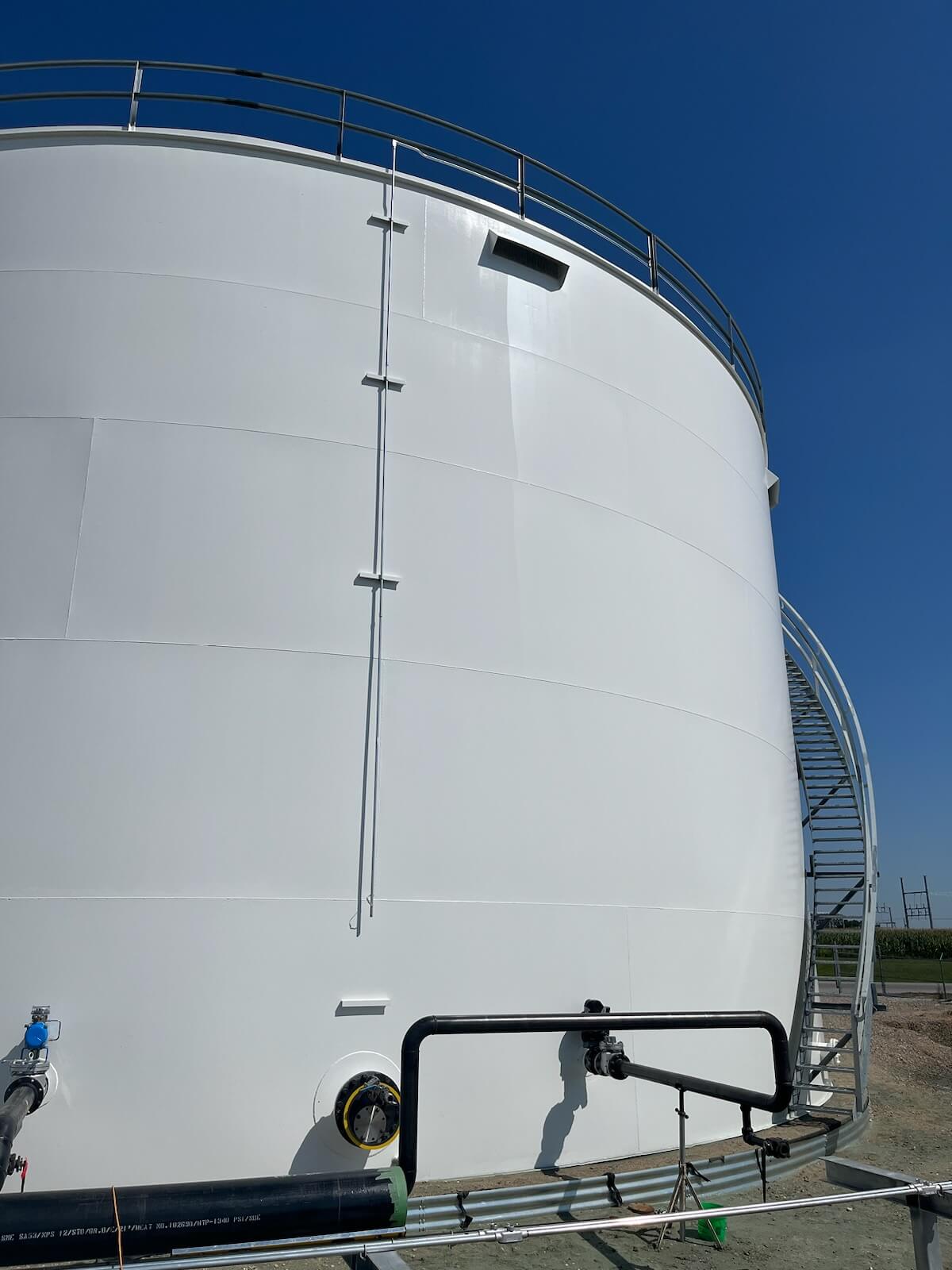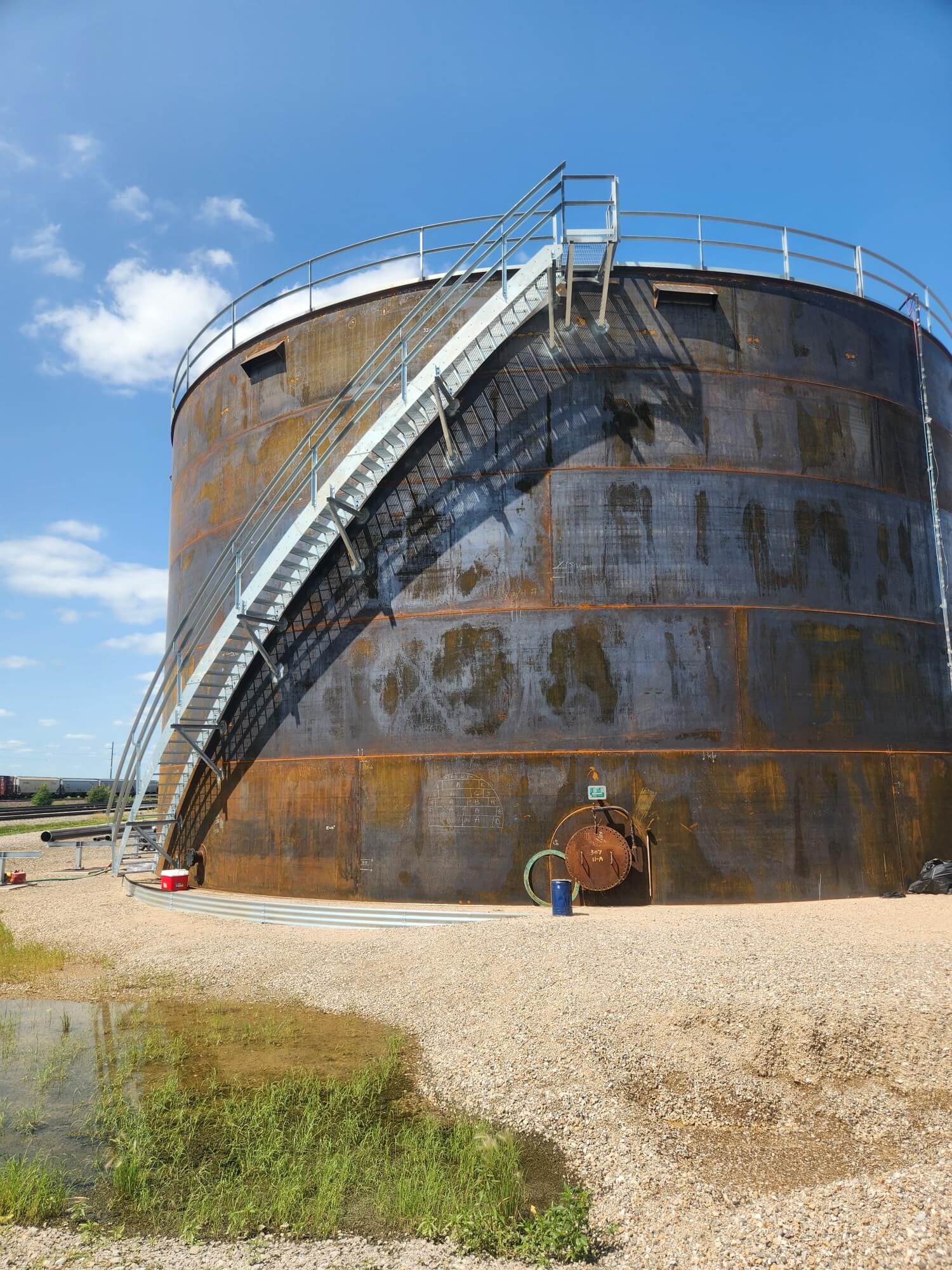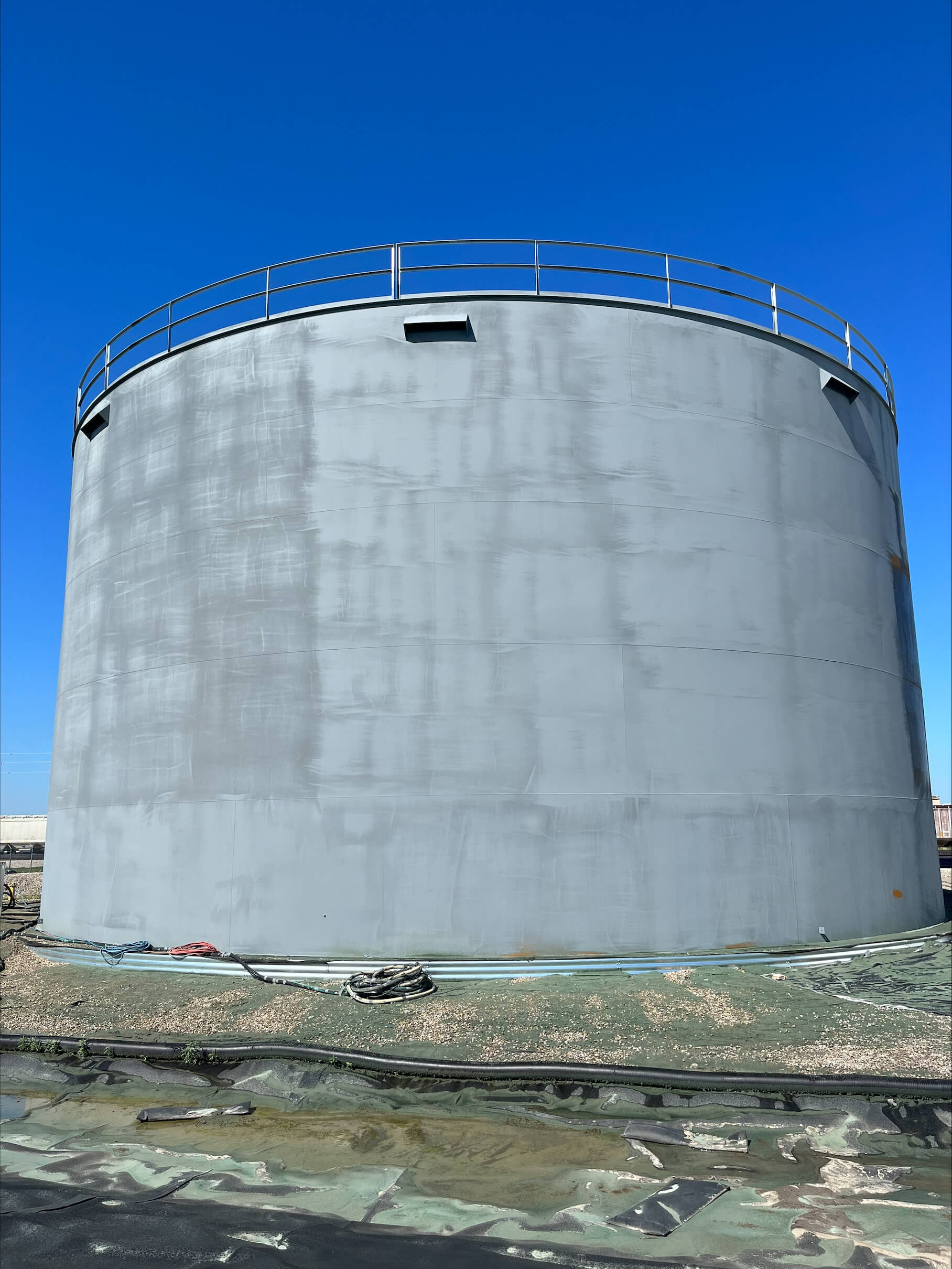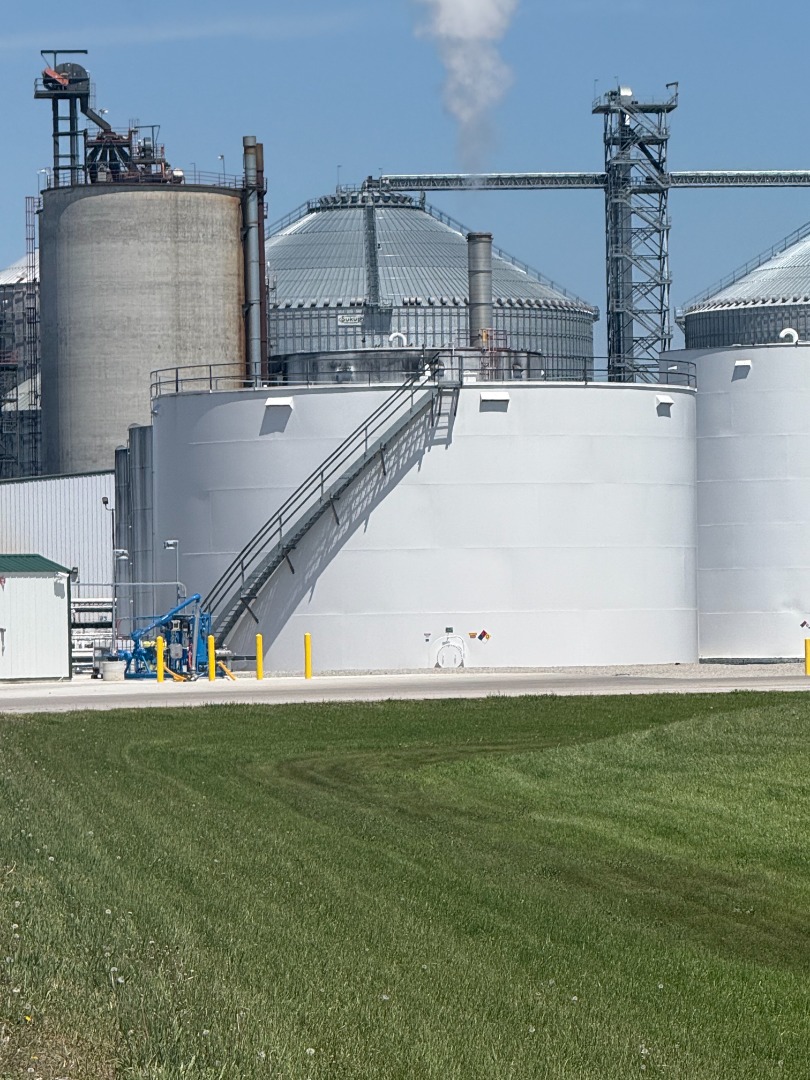
Big white tanks are everywhere in corn country.
Some of them don't always look so neat, but that's not for a lack of effort. If you've seen ugly black streaks that stain tank shells, then it's highly likely you've seen evidence of a stubborn fungus.
And for the leaders at an agricultural ethanol production plant in Iowa, they'd seen enough. Addressing the growth with constant cleaning and recoating wouldn't cut it, so they found a unique siloxane topcoat that could.
“Whiskey fungus” is almost unstoppable
Golden Grain Energy produces ethanol for fuels from corn grown in the Midwest. Its plant, on the southern outskirts of Mason City in northern Iowa, contains a tank yard where ethanol is held prior to shipment.

Though hit hard by plummeting demand during the COVID-19 pandemic, the ethanol segment's fortunes have reversed dramatically: Now, demand is strong and production is outpacing available storage capacity. Today's ethanol storage tank construction boom is the result.
Golden Grain was a typical case in 2023, when they built a new steel tank that's 70 feet (21.3 meters) tall and 36 feet (11 meters) wide. The tank would obviously be coated, but this came with an added layer of complexity: In addition to protecting the asset from the expected environmental exposures of northern Iowa—baking hot summers, frigid winters, and wind-driven rain, snow, and hail—the company also wanted to try a different way of addressing the black fungal growth it had observed on other tanks and piping.
Baudoinia compniacensis has made the rounds in the popular press in recent years. The black, sticky fungus feeds on alcohol vapors and famously attacked barrel houses at a Jack Daniels distillery in Kentucky. The team at Golden Grain knows well that "whiskey fungus" has as much of a taste for agricultural ethanol as it does bourbon.
No evidence suggests baudoinia is harmful to health, but in Golden Grain's view, fungal growth of any kind is unwanted. Thorough, frequent cleaning had been their traditional course of action, as had more-frequent-than-usual recoating.
The company was fed up with the increasing cost of what amount to expensive bandages. It was time to invest in a more effective, longer-lasting solution.
Carboxane 2100 BR: Not your everyday biocide

A fortunate past professional connection meant that the team at Golden Grain was aware of a new topcoat specifically developed to fight baudoinia.
Carboxane 2100 BR is a polysiloxane topcoat that performs ideally in exterior tank and pipe applications, with ultra-weatherable characteristics and excellent color and gloss retention. It additionally contains a proprietary fungal growth inhibitor.
Protective coatings that contain growth-inhibiting additives are not new, but the inhibitor used in Carboxane 2100 BR is markedly different from the mildewcides common in competing topcoats. In our observation, these mildewcide-containing products work, but not very well, and not for very long.
Additionally, after making cost comparisons with the assistance of Carboline technical experts, Golden Grain saw that the cost to repeatedly clean a tank is about the same as the cost to recoat it. On paper, time and money could be saved if a new coating system could drastically reduce cleaning frequency.
So the new tank built in 2023 would also be the canvas for an experiment. Would reality match the napkin math? The complete corrosion protection package consisted of Carbozinc 859, a low-VOC organic zinc-rich epoxy primer offering cathodic protection of the steel tank shell, followed by the Carboxane 2100 BR topcoat.
A new protective coating program

It didn't take Golden Grain long to see results.
Observations conducted during the remainder of 2023 through early 2024 revealed no fungal growth on the new tank coated in Carboxane 2100 BR. Confident in its performance, Golden Grain upended its prior regimen of cleaning and recoating, instead issuing a blanket corrosion control system specification including this siloxane topcoat. New tanks and piping will be protected by this system, and existing assets will receive it when they are due for recoats.
Industry's war on whiskey fungus isn't over. But in Iowa, Golden Grain Energy is winning its battle.

